1.
Introduction
In [1], S. Omri and L. T. Rachdi define the Gauss-Weierstrass transform Wν,t associated with the Hankel transform as follows:
where Jν(⋅) is the normalized Bessel function defined in (2.2). This integral transform, which generalizes the usual Weierstrass transform [2,3,4], is used to solve the heat equation problem:
where the Bessel differential operator is given by
The authors in [1] established practical, real inversion formulas for Hankel-type heat diffusion, building on the ideas of Saitoh, Matsuura, Fujiwara, and Yamada [2,3,4,5,6], and utilizing the theory of reproducing kernels [2,3,4].
Recently, many researchers have adapted and applied this same method to various types of Gauss-Weierstrass integral transforms associated with several kinds of differential and difference-differential operators. For instance, Soltani pioneered the exploration of Lp-Fourier multipliers for the Dunkl operator on the real line [7], extremal functions on Sobolev-Dunkl spaces [8], multiplier operators and extremal functions related to the dual Dunkl-Sonine operator [9], and extremal functions on Sturm-Liouville hypergroups [10]. More recently, the same authors examined Dunkl-Weinstein multiplier operators [11]. Additional research was conducted by Dziri and Kroumi [12], as well as by Ghobber and Mejjaoli [13]. For further work related to existing results on inverse problems, some important findings can be found in [14,15,16].
In this work, we consider the space-fractional diffusion equation associated with the Bessel operator, which is given by
where the parameters ν and α are restricted by the condition ν≥−12, 1≤α≤2, and the space-fractional Bessel operator (−Bν)α/2, which is defined pointwise by the principal value integral [17],
here, the normalization constant cν,α is given by
In this work, we introduce the generalized Gauss-Weierstrass transform associated with the Bessel operator by
where Sα,ν(x,y,t) is the fractional heat kernel, which will be defined later. For α=2, this integral transform simplifies to the Gauss-Weierstrass transform defined in (1.1). Thus, it can be considered a one-parameter extension of the transform (1.1). The principal motivation for considering the generalized Gauss-Weierstrass integral transform is that for ν=n2−1, it reduces to the ordinary Gauss-Weierstrass transform for radial functions on the Euclidean space Rn. Since the Bessel operator coincides with the radial part of the Laplace operator Δ=∑mi=1∂2i, this transform provides a significant extension. For more details, the reader is referred to the paper [18]. By using the properties of the Fourier-Bessel transform Fν and its connection with the ∗-convolution product (see Section 2), we first show that the transform Wα,ν,t is a one-to-one bounded linear operator from a Sobolev space Hsν into L2ν(0,∞). By the same argument as the standard Gauss-Weierstrass transform, we can assume that the operator W−1α,ν,t is unbounded or that its range is not closed, which causes the ill-posed problem in solving the operator equation
Then, for stable reconstruction of ϕ, some regularization techniques are necessary. The Tikhonov regularization techniques are widely applicable (e.g., Bakushinsky and Goncharsky [19], Baumeister [20], Tikhonov and Arsenin [21], Tikhonov et al. [22]). In our case, the Tikhonov regularization can be stated as follows: For given data ψ∈L2ν(0,∞), we search for a minimizer of a functional given by
with a parameter γ>0, which is called a regularizing parameter. We show that the above variational problem has a unique solution denoted by Rγ,ψ and called the regularized solution; it is also referred to as the extremal solution by Soltani [7]. The following theorem is the main result of the paper, which provides a real inversion of the generalized Gauss-Weierstrass transform.
Theorem 1.1. Let s>ν+1. For every ϕ∈Hsν and ψ=Wα,ν,t(ϕ), we have:
Moreover, the set {Rγ,ψ}γ>0 converges uniformly to ϕ as γ→0+.
Our paper is organized as follows:
● Section 2 serves as an introductory section that provides an overview of fundamental concepts. Topics covered include the Fourier-Bessel transform, generalized translation, generalized convolution, fractional Bessel operator, and the space-fractional Bessel diffusion equation, setting the stage for understanding subsequent content.
● Section 3 is devoted to introducing the generalized Gauss-Weierstrass transform and establishing its principal properties.
● Section 4 states the main results of the paper and provides their proofs.
2.
Preliminaries
Before revealing our main results, it is essential to establish the groundwork by introducing key notations and collecting pertinent facts about the Bessel operator. This section serves as a primer, elucidating the significance of the Fourier-Bessel transform and the Delsarte translation, which will be pivotal for the subsequent analysis.
2.1. Fourier-Bessel transform
The normalized Bessel function is defined as follows:
where Γ(⋅) is the Gamma function [23] and Jν(⋅) is the Bessel function of the first kind, see [23, (10.16.9)]. Then
The normalized Bessel function arises as the unique solution to the eigenvalue problem related to the Bessel equation. More precisely, the functions defined as x→Jν(λx) stand as the unique solution to the eigenvalue problem [23, (10.13.5)]
The function Jν(⋅) is an entire analytic function with even symmetry. Notably, there are straightforward special cases that hold:
We introduce the following notation:
● Lpν(0,∞) (1≤p) represents the Lebesgue space associated with the measure
The norm ‖ϕ‖Lpν(0,∞) is the conventional norm given by
● S∗(R) signifies the space of even functions on R that are infinitely differentiable and decrease rapidly, along with all their derivatives.
For ν≥−1/2, the Fourier-Bessel transform Fνϕ of ϕ∈L1ν(0,∞) is defined as:
This integral transform can be extended to establish an isometry of L2ν(0,∞). For any function ϕ belonging to L1ν(0,∞)∩L2ν(0,∞), the following relationships hold [24, Prop. 5.Ⅲ.2]
Furthermore, its inverse is expressed as:
Moving forward, our focus shifts to the exploration of the generalized translation operator linked to the Bessel operator. This operator is symbolized as τxν and operates on functions belonging to L1ν(0,∞) according to the following expression [25, §3.4.1]:
With the help of this translation operator, one defines the convolution of ϕ∈L1ν(0,∞) and ψ∈Lpν(0,∞) for p∈[1,∞) as the element f∗νg of Lpν(0,∞) given by
The following properties are obvious.
● Fν(τxνϕ)(t)=Jν(xt)Fνϕ(t),
● Fν(ϕ∗νψ)(x)=Fνϕ(x)Fνψ(x).
2.2. Space-fractional diffusion equation
In this section, we consider the space-fractional Bessel diffusion equation [17,18]
where the parameters ν and α are restricted by the condition ν≥−12, 1≤α≤2, and the space-fractional Bessel operator (−Bν)α/2, which is defined pointwise by the principal value integral [17],
here, the normalization constant cν,α is given by
Moreover, the Fourier-Bessel transform of the fractional Bessel operator is given by [17]
Let us denote the Fourier-Bessel transform of a function u(x,t) with respect to x as ˆu(ξ,t), where ξ≥0. Applying the Fourier-Bessel transform to both sides of the equation in (1.3), we obtain:
Then
Therefore,
where
Using the following scaling rules for the Fourier-Bessel transform:
we obtain the following scaling property of the kernel Gα,ν(x,t)
Consequently by introducing the similarity variable x/tα, we can write
where
Particular cases of the density Kα,ν are the following [26]:
● The density K2,ν(x), where ν≥−12, corresponds to the Gaussian density kernel:
● The density K1,ν, where ν≥−12, corresponds to the Poisson density:
More generally, for 1<α<2, we have [17, Proposition 4.1]:
Definition 2.1. For ν≥−12 and 0<α<2, the generalized heat kernel is defined as:
Lemma 2.1. The heat kernel Gα,ν(x,y,t) possesses the following properties:
i) Gα,ν(x,y,t)=τyνGα,ν(x,t).
ii) Gα,ν(x,y,t)=Gα,ν(y,x,t).
iii) Gα,ν(x,y,t)>0.
iv) ‖Gα,ν(x,y,t)‖L1ν(0,∞)=1.
v) Gα,ν(x,y,t)=t−2(ν+1)/αGα,ν(xt−1/α,yt−1/α,1).
vi) Fν(Gα,ν(⋅,y,t))(ξ)=e−tξαJν(yξ).
Proof. The proofs for properties i), ii), v), and vi) are straightforward. Property iii) follows from [18, Theorem 7] and the positivity of the generalized translation operator τyν. The proof for property iv) is derived by setting ξ=0 in the formula from property vi. □
3.
The generalized Weierstrass transform
Definition 3.1. The generalized Weierstrass transform associated with the fractional Bessel operator, denoted as Wα,ν,t, is defined on L2(dσν) by the following expression:
where Ss,ν(x,y,t) is the generalized heat defined in (2.17).
Let s>ν+1. We define the space H(s)ν as follows [1]:
This space is equipped with an inner product defined by:
and a norm:
The space H(s)ν features a reproducing kernel, which is defined by:
Additionally, this space satisfies the following inclusions:
For further details concerning the space H(s)ν, readers are referred to the paper [1].
Theorem 3.1. i) Let ϕ∈C0(R)∩L2ν(0,∞). For t>0 and x∈[0,∞), the function Wα,μ,tϕ(x) solves the following heat equation.
with the initial condition
ii) The integral transform Wα,ν,t, for t>0, is a one-to-one bounded linear operator from H(s)ν into L2ν(0,∞), and we have:
Proof. The claim i) follows from [17, Theorem 4.5]. From Lemma 2.1, for all ϕ∈L2ν(0,∞), we have:
This inequality shows that the transform Wα,ν,t is indeed bounded. To complete the proof of ii), it remains to show that this transform is one-to-one. Let ϕ∈H(s)ν such that Wα,ν,tϕ=0. Then
from the injectivity of the Fourier-Bessel transform, we get ϕ=0. This shows that Wα,ν,t is one-to-one. □
We denote by H(s)ν,α,γ, the space H(s)ν equipped with the inner product
and the norm
Then, we have the following main result:
Theorem 3.2. Let ξ, t>0 and s>ν+1. Then the Hilbert space H(s)ν,α,γ admits the following reproducing kernel:
that is
(i)For all x∈[0,∞), the function y↦Kν,s,α,γ(x,y) belongs to H(s)ν,α,γ.
(ii) For all ϕ∈H(s)ν,α,γ and any y∈[0,∞).
Proof. For all x∈[0,∞), consider the function
which belongs to both L1ν(0,∞) and L2ν(0,∞). Then, by the Plancherel theorem for the Fourier-Bessel transform, the function
is well-defined. Following this,
is a member of L2ν(0,∞). This demonstrates that for all y≥0, the function Kν,s,α,γ(⋅,y) belongs to H(s)ν. This establishes part (ⅰ) of the theorem.
Let ϕ∈H(s)ν and y∈[0,∞). By Eq (3.3), we have
From the relation
the action of Wα,ν,t on the kernel Kν,s,α,γ(⋅,y) is then:
Therefore
Combining Eqs (3.4) and (3.5), we get
This confirms the reproducing property (ⅱ). □
4.
Tikhonov regularized method
We now consider the variational functional associated with the generalized Weierstrass integral transform Wα,ν,t, defined as
For γ>0, the functional Jγ is strictly convex and Jγ(ϕ)≥γ2‖ϕ‖ν. Hence, Jγ has a unique minimizer, which can be characterized by the first-order condition
where J′γ(ϕ) is the Fréchet differential of Jγ. We denote by Rγ,ψ the regularized solution of the Eq (4.2), that is,
The following theorem is our second main result.
Theorem 4.1. For ν≥−1/2, γ>0, and ψ∈L2ν(0,∞). Then there is a unique function Rγ,ψ∈H(s)ν, where the infimum of the functional Jγ, defined by
is attained. Furthermore, the regularized function Rγ,ψ is given by
where
Proof. Observe that
where Δϕ denotes the increment.
Since,
Taking into account Eq (4.6) and using the Plancheral formula for the Fourier-Bessel transform to get
Hence, the Fréchet differential of Jγ can be written as
By the Perseval formula for the Fourier-Bessel transform, it follows that the regularized solution Rγ,ψ(ξ) is given by
Therefore
It is easy to see that
By the inversion formula for the Fourier-Bessel transform, we have
We have
where
□ In the following theorem, we will provide an error estimate for the inversion formula.
Theorem 4.2. Let s>ν+1. For all ψ1,ψ2∈L2ν(0,∞), the following inequality holds:
Proof. Consider any ψ1,ψ2∈L2ν(0,∞). The squared norm of the difference between the operators Rγ,ψ1 and Rγ,ψ2 in the space H(s)ν are given by:
Using the formula for the Fourier-Bessel transform of the extremal function Rγ,ψi:
we can express the integral as:
By using the inequality
we can further estimate:
This completes the proof. □
Proposition 4.1. Let s>ν+1, γ>0, and ψ∈L2ν(0,∞). We have the following estimate:
where
Proof. From (4.5) and applying the Cauchy-Schwarz inequality, we have:
Integrating over [0,∞) with respect to the measure σν(dx), we obtain:
However,
it follows that
Therefore,
We complete the proof by using the relation (3.2) and the fact that:
and
□
Theorem 4.3. Let s>ν+1. For every ϕ∈H(s)ν and ψ=Wα,ν,t(ϕ), we have:
Moreover, the set {Rγ,ψ}γ>0 converges uniformly to ϕ as γ→0+.
Proof. Let ϕ∈H(s)ν and ψ=Wα,ν,t(ϕ). Utilizing the formula given in Eq (4.6), the Fourier-Bessel transform of the extremal function Rγ,ψ takes the form:
We can express the norm of the difference between Rγ,ψ and ϕ in H(s)ν as:
Using the dominated convergence theorem and observing that
and given that ϕ∈H(s)ν, we deduce that
The function Fν(ϕ) belongs to both L1ν(0,∞) and L2ν(0,∞). Applying the inversion formula for the Fourier-Bessel transform, we compute the deviation of the function ϕ under the operator Rγ,ψ as follows:
Thus, for all ξ∈[0,+∞[, the magnitude of the deviation is bounded by:
Employing the dominated convergence theorem and noting that:
we deduce that the supremum over all ξ≥0 of the deviation approaches zero as γ tends towards zero
This completes the proof of convergence in the H(s)ν norm and uniform convergence as γ→0+. □
Example 4.1. As an illustrative example, consider the fractional heat equation on (0,∞)×(0,∞)
with the initial condition
To apply the Tikhonov regularization method to this fractional heat equation, we consider the integral operator W1,−1/2,t:H(1)−1/2→L2(0,∞) defined by
where the Sobolev space H(1)−1/2 is realized by the reproducing kernel Hilbert space K1(x,y) given by
where x,y≥0.
We now consider the following best approximation problem, that is, the Tikhonov functional. For any ψ∈L2(0,∞) and γ>0, we aim to solve
Then for the RKHS H(s)−1/2,1,γ consisting of all the members of H(1)−1/2 with the norm
the reproducing kernel N−1/2,1,1,γ(x,y) can be calculated directly using the Fourier integrals as follows:
Hence, the unique member of H(1)−1/2 with the minimum H(1)−1/2 norm—the function Rγ,ψ which attains the infimum—is given by
For ϕ∈H(1)−1/2 and for ψ=W1,−1/2,tϕ, we have the formula
uniformly on (0,∞).
5.
Conclusions
In this paper, we have explored the generalized Gauss-Weierstrass integral transform associated with the Bessel operator, emphasizing its application to space-fractional diffusion equations. This extension is significant because the Bessel operator coincides with the radial part of the Laplace operator, thereby broadening the scope of the classical transform.
We utilized the properties of the Fourier-Bessel transform and its connection with the ∗-convolution product to demonstrate that the transform Wα,ν,t is a one-to-one bounded linear operator from the Sobolev space Hsν into L2ν(0,∞). Given the ill-posed nature of the inverse problem, we applied Tikhonov regularization techniques to achieve stable reconstruction of functions. Our main theorem established the convergence of the regularized solution Rγ,ψ to the original function ϕ as the regularization parameter γ approaches zero.
The implications of our findings extend beyond theoretical interest, offering potential applications in solving inverse problems associated with fractional diffusion equations. Future research could further investigate the numerical implementation of the regularized inversion process and explore other types of fractional differential operators within this framework.
Overall, our work provides a robust foundation for the generalized Gauss-Weierstrass transform's utility in fractional calculus and opens avenues for further investigation into its applications in various mathematical contexts.
Use of AI tools declaration
The author declares he/she has not used Artificial Intelligence (AI) tools in the creation of this article.
Acknowledgments
The author would like to extend their sincere appreciation to the Researchers Supporting Project number (RSPD2024R974), King Saud University, Riyadh, Saudi Arabia.
Conflict of interest
The author declares that there is no conflict of interest regarding the publication of this paper.











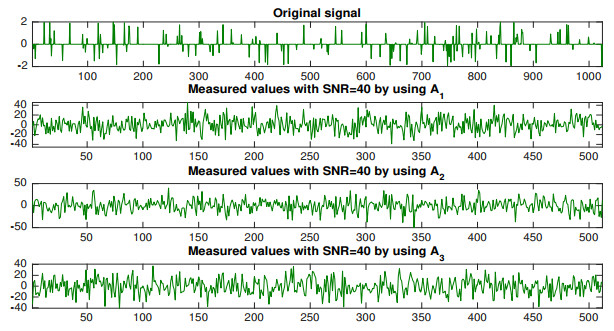
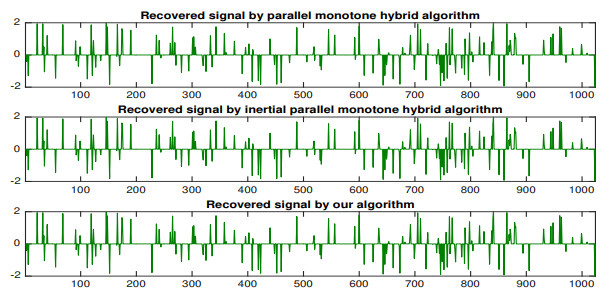
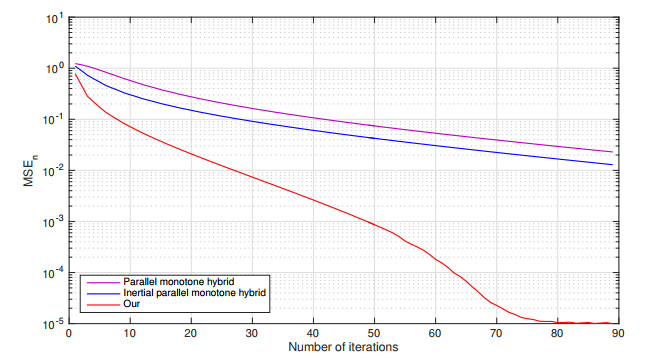
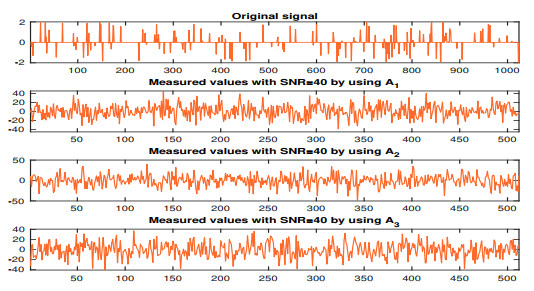
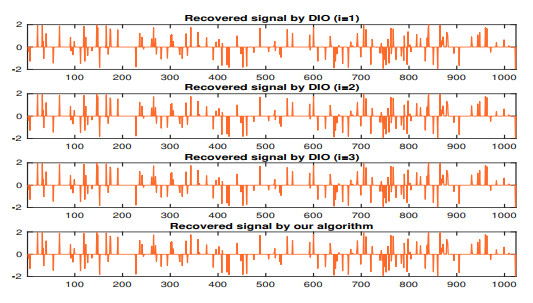
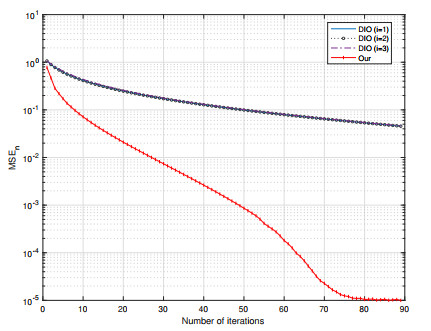
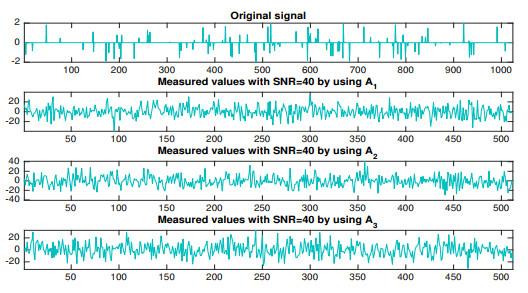
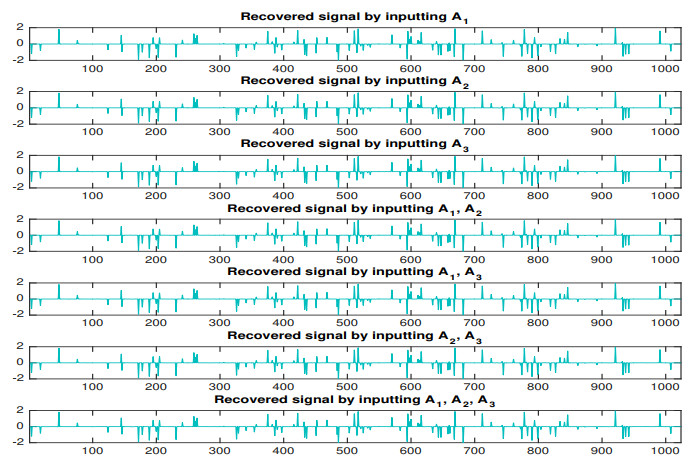
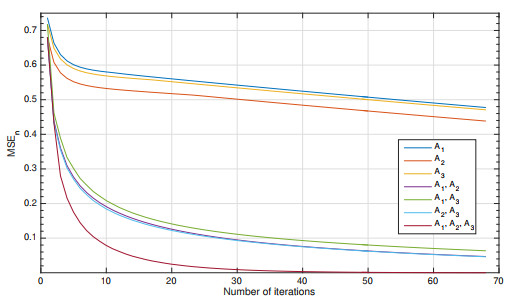


 DownLoad:
DownLoad: